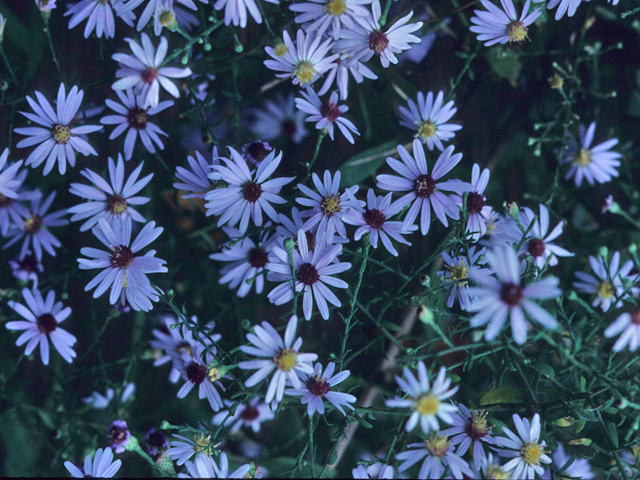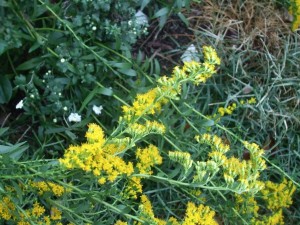
Short's aster. Photo courtesy wildflower.org
Mother Nature shows off her best decorating skills this time of year.
Strewn along the roadways are asters (Symphyotrichum) and goldenrods (Solidago), native perennials in North America that make the perfect pairing of blues and yellows.
We can follow nature’s lead in our own landscapes by planting the native species or hybrid cousins. There are several garden-worthy hybrids of these native plants, such as ‘Fireworks’ and ‘Golden Baby’ goldenrods and ‘Raydon’s Favorite,’ and ‘Alma Potschka’ asters, to name a few.
Besides adorning backyards and byways, these plants are an important part of a greater ecology that includes birds, bees, butterflies and other wildlife. For instance, these fall blooming perennials are a key food source for migrating, pollinating insects and hummingbirds, which stoke up on nectar as they wing south.
Both plants do best in full sun and they tolerate light shade. Plant in well-drained, average soil. Asters and goldenrod are similar in care to another fall bloomer, the Chrysanthemum.

'Solar Cascade' goldenrod. (C) Jo Ellen Meyers Sharp
Cut back asters and tall goldenrods about half until the middle of July to rein in their height and increase the number of flowers. Depending on the cultivar, goldenrods can be fairly aggressive, spreading through underground stolens. At the end of the season when the plants look bad, cut them back to the ground and remove any debris to reduce the chance of disease or insect problems.
Asters tend to bloom a bit later and longer than mums, coming on at the tail end of goldenrod’s prime. Their long bloom period allows them to compliment the fall colors of trees and shrubs in the landscape.
Both plants may be susceptible to powdery mildew, so place them where they have good air circulation or use cultivars that are resistant to the fungus disease. Asters and goldenrods are lovely and long lasting as cut flowers, too.
